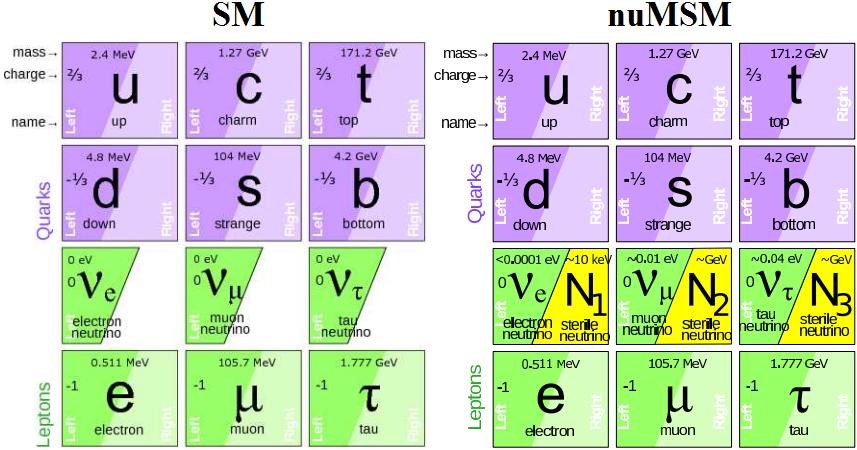Sterile Neutrinos
The matter particles of the Standard Model consist of six quarks and six leptons (left figure). Quarks and leptons are organize in three families. Each family consists of the particles that differ by one unit of electric charge. For instance the "up-type" quarks have charge +2/3 and "down-type" quarks have electric charge -1/3. Charged leptons (like the electron) have electric charge -1, while neutrinos are neutral. In addition, all particles apart for neutrinos, exists in two chirality states: left-handed and right-handed. The reason why neutrinos only have one chirality state is related to the fact that in the Standard Model neutrinos are massless. However, we have now strong experimental evidences that neutrinos have a small but non-vanishing mass.

The SHIP experiment, of which our group has been one of the main proponents, has been designed and optimized to search for these particles.